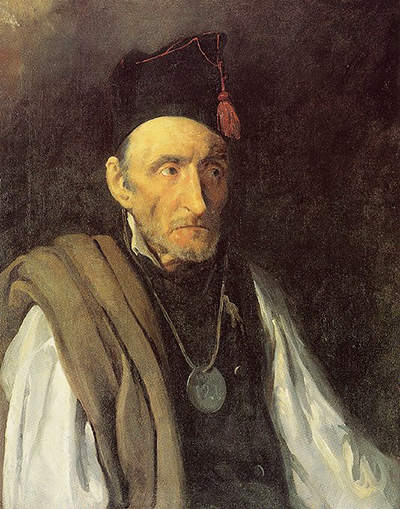During the aftermath of the French Revolution, Theodore Gericault made a series of portraits of patients, from life, who resided in an asylum or clinic. What is immediately striking about Gericault's The Insane is that it conveys little or nothing of insanity.
Rather, its subject is treated as an ordinary individual, dressed in distinct clothing and with other unique traits. Gericault's perspective in this painting is both unprecedented and enlightened. Robert Snell's book Portraits of the Insane suggests the notion that Gericault portrays human beings, sane or insane alike, as whole, and available for relationship and communication. Snell designates this treatment by Gericault, the therapeutic subject.
Painted in 1822, in the Post-Revolution upheaval of France, this particular portrait of the insane by Gericault is specifically, Portrait of a Man Suffering from Delusions of Military Command. Within these works, Theodore Gericault appears to break entirely free of Neoclassical influences; these studies in portraiture almost hark back to the Impressionist miniatures by Gerard Horenbout and Hans Holbein. This 'insane' man is posed against a dark backdrop, so that there is nothing in the shadowy layers of colour to detract from his form and features. In general, Gericault's subdued colour palette in The Insane lends itself to a sombre mood on the part of the viewer.
Critics have contended that Gericault's brushwork is more erratic in this painting contrasted to earlier works, and that this is outwardly representative of the disarray within the patient's mind. There nevertheless remains an acute realism and attentiveness to detail in this image, even down to the tassel and medallion of the man's attire, the bushiness of his eyebrows and the hollowness of his cheeks. The life like proportions of the 'insane' man's head give any viewer the impression they are confronting a real person with a real life head on, which can create a disquieting sense of staring in the mirror.
A sideways glance and attitude on the part of the subject perhaps give credence to the idea that he is not entirely willing or consenting to be captured for posterity on canvas. The only hints at military grandeur lie in this man's regimental attire as he is depicted: otherwise, he appears incredibly human, a stern-faced martinet upon whose face years of experience have etched their lines. The chords of muscle on the neck as they disappear into the man's clothing are incredibly visceral, real and believable, as is the darkness of the stubble shadowing his cheekbones.




